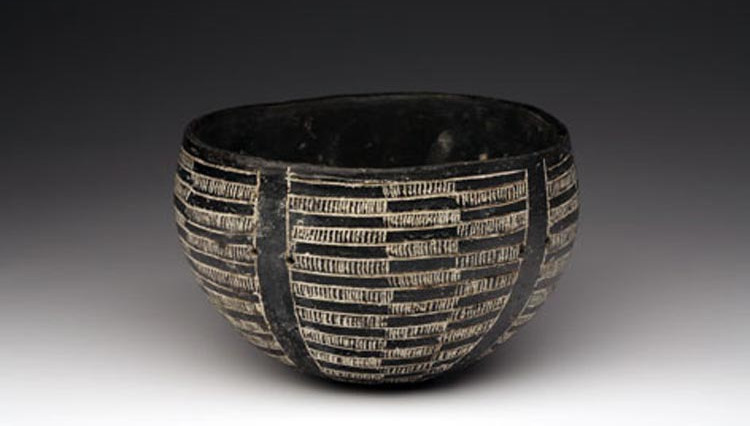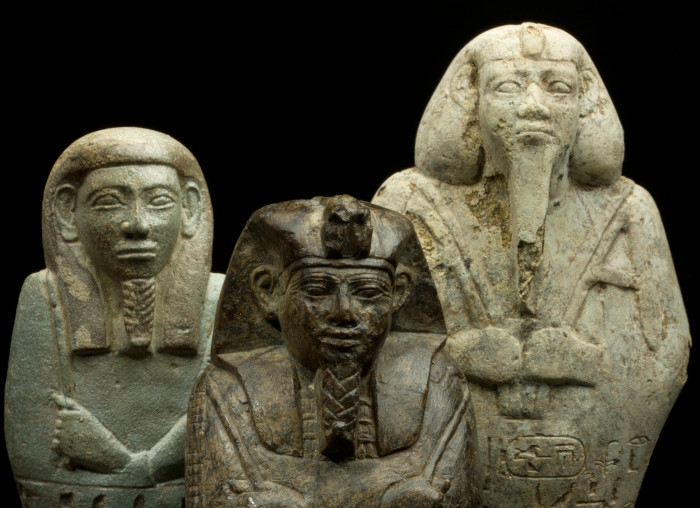Exhibitions
Departments
A gift for Pepi
Similarly as their predecessors, the pharaohs of the Old Kingdom were unsatisfied with a peaceful coexistence with Nubia, and they continued military expansion into this region. The inscription of Sneferu (2613 – 2494 BC) describes the spoils from just one campaign, which include seven thousand prisoners and two hundred thousand head of cattle. Egyptian rulers were no more interested only in immediate loot, but they planned to take control over Nubian deposits, particularly diorite and carnelian quarries located to the west of today’s village of Toshka, as well as gold and copper mines. In Buhen, Egyptians established one of the first permanent settlements and a metallurgy centre, where they smelted copper ore before its further transport to the North. Egyptian caravans to the north were followed by Nubian volunteers who wanted to serve in the pharaohs’ army. The armies of Pepi I, the ruler of Dynasty VI, hired numerous contingents of Nubians, who had already won a reputation as skilled archers.
The Egyptian court was in continuous demand for exotic goods. From the south Egyptian caravans brought ivory, animal hides, ostrich feathers and ebony. In his tomb in Asuan, Egyptian dignitary Harchuf reported on four trade expeditions to the land of Jam, now identified as Butana or the area of present-day Dongola. During the first campaign, Harchuf purchased an original present for pharaoh Pepi II, i.e. “a small man”, probably a Pygmy. In his letter of thanks, then a still boy-pharaoh wrote with appreciation: “Our majesty desires to see this dwarf more than gifts from Synai and the land of Punt!”.
Fortresses on the Nile
In the first Intermediate Period, along with the collapse of the centralized Egyptian state, the ties between Nubia and the North had loosened, but they were established again in the Middle Kingdom. Imperial aspirations of Egypt reached its peak during the rule of Dynasty XII (1985 – 1773 BC). Under the pretext of securing gold mines in Wadi el-Allaki and local routes, the armies of pharaoh Amenemhat I i Senuseret I conquered Lower Nubia which was then called the land of Uauat. In the area of present-day Batn El-Hajar the pharaoh Senuseret I began the construction of a chain of seventeen fortresses of impressive sizes (including fortresses in Ikkur, Kuban, Mirgissa, Uronarti and Semna), located mostly in strategic places: on the banks of the Nile or on rocky islands. The fortresses were given special names to arouse fear among potential enemies (“Enslaving tribes” or “Protecting Arches”). The fortress in Buhen, which is certainly the best preserved example, gives us some idea of the scale of these undertakings. Its residential buildings were surrounded by a double ring of mud-brick walls with the height of 11 m. The stele of king Senuseret III issued in the eighth year of his reign (about 1863 BC) in Uronarti read that the state’s boundary fortified in this way was to “prevent any Nubian from passing it when faring northward, whether on foot or by boat, as well as any cattle of the Nubians, unless this is a Nubian who comes to barter at Iken or as an envoy”. The system created by pharaohs functioned smoothly for over two centuries until the seventeenth century BC, when Egypt was hit by another crisis, linked with the invasion of the Hyksos. Then Egyptian garrisons left fortresses, which no one had been able to conquer.
In the shadow of Egypt - C-Group
The C-Group culture developed within the territory controlled by the pharaohs of the Old and Middle Kingdoms, known to the Egyptians as Wawat or Irchet. Although the people of C-Group in many cases occupied the same settlements as the communities of A-Group, there is no direct evidence for ethnic relationship between the two cultures. Despite the military occupation the inhabitants of the frontier areas managed to gain some profits from the Egyptian civilization made it possible to spread the use of dried silt brick, and the settled way of life led to progress in the construction of human dwellings, fortified settlements included. The specific burial ritual included burials covered with earthen-stone barrows, animal sacrifice and providing the dead with small magic figurines and equipment proper to their social status and occupation (tools, weapons).

Nasza strona internetowa używa plików cookies (tzw. ciasteczka) w celach statystycznych, reklamowych oraz funkcjonalnych. Dzięki nim możemy indywidualnie dostosować stronę do twoich potrzeb. Każdy może zaakceptować pliki cookies albo ma możliwość wyłączenia ich w przeglądarce, dzięki czemu nie będą zbierane żadne informacje. Dowiedz się więcej jak je wyłączyć. OK, Rozumiem


